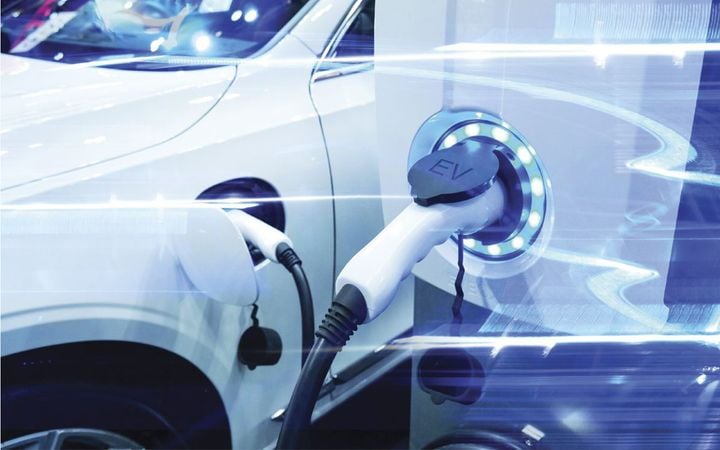
It’s time to create an environment and culture that welcomes the inherent fears and curiosities of EV buyers, and those who aren’t EV buyers-yet.
IMAGE: Getty Images
The shift to electric vehicles (EV) will not happen with the flick of a switch. There will be early adopters and those who are resistant to change. If you visit any comment section of an EV social media post, you’ll be welcomed by suggestions that the grid isn’t ready, windmills aren’t the answer, and sound matters almost as much as performance. People love change, if almost nothing changes. The comfort of the familiar must be maintained in some form for easy adoption to follow.
HUMAN ENGINEERING
As humans, we trend towards efficiency. Information that used to take days, weeks, months, and even years to travel the globe, can now happen instantaneously. Efficiency is driven by reaching new milestones and figuring out what could have been done differently to achieve what has been accomplished while burning less time and other resources. The auto industry has traditionally transformed the way the world turns. The time has come for all of us to transform again, driving efficiencies and ushering in a new wave of speed, spirited driving, and waking up every morning to a vehicle whose energy has been replenished overnight and is ready for whatever its owner sets out to do for the day.
IT’S A DONE DEAL
The decision has been made — U.S. and global leaders are pushing the EV transition forward. Manufacturers and brands are investing billions of dollars into research and development of new vehicles as well as the required infrastructure that will be needed to power this new transportation category. If the signals we’ve received from these large, powerful organizations is of any significance, there are simply only two types of customers that exist today — EV buyers and people who aren’t EV buyers, yet.
Dealers who take the time to recognize the opportunity to reestablish the foundation on which their stores have been built during the past few decades will be tomorrow’s leading organizations. As Jack Welch stated, “If the rate of change on the outside exceeds the rate of change on the inside, the end is near.”
EV BUYERS ARE ALREADY HERE
By the end of 2022, Tesla will have delivered more than four million vehicles with a model that does not include an inventory-rich brick and mortar store with an onsite sales team. Tesla spends more on research and development than any automaker in the world and spends very little on advertising, yet is the most valuable automaker worldwide as measured by market cap.
Is your dealership prepared for the EV buyer? Are you planning for and providing the information and training required to answer consumer questions? Do you have a staff of forward thinking, opportunity-seeking people?
As brands begin to deliver their first and second generation of EVs, we need to realize that the nostalgia of a rumbling engine, the scent of burned gasoline, and simple repairs of carburetors and other mechanical components will be a thing of the past. The best part is no part, and having your uncle provide a repair solution in his driveway will soon be something only visualized in movies and memories. Buyers are aware that EVs have fewer mechanical parts resulting in less frequent repairs, however, the public fears change, which presents an opportunity to satisfy these apprehensions with products and services designed to do so.
ENERGY ADVANTAGE
EV home chargers can provide the energy required to handle hundreds of miles of travel with a fraction of the energy it takes to power a vehicle using gasoline. As Einstein stated, energy cannot be created nor destroyed, it can only be changed from one form to another. For every five dollars of gas pumped into a car, approximately one dollar of it is expended to propel the vehicle forward. The rest is lost to heat and other parasitic auxiliary components that draw away energy. This means that even though the memes and rhetoric repeated in social media echo chambers show truckloads of coal labeled as “EV fuel,” which may be true on the surface, the entire story tells a much different tale.
If our power grids were fueled by 100% coal, more than 30% less energy is needed to propel streets full of EVs compared to gas vehicles. Change from coal to powering the grids with natural gas, and the disparity climbs to more than 50%. Adding in hydropower and other renewables, we could be using up to 75% less energy overall. This is the information missing from the “go green” conversations. The benefits in performance and overall ownership experience are now the main reasons consumers are choosing an EV, not their love for granola and the Grateful Dead, as we saw in the boom of the Prius.
EV READINESS
Summing it up with a cliché — an ounce of preparation prevents a pound of cure. Dealer principals and general managers need a preparation strategy starting with their most valuable asset — their people. All levels of employees need to be provided with the appropriate and accurate information regarding current and upcoming EVs that will be sold. They need to immerse themselves with the details of the vehicles with a good understanding of charge port locations and availability of chargers. These vehicles should be driven, their touchscreens poked, and their advanced features utilized. Empower them with knowledge and the experience of operating these exciting new vehicles. Invest in on-site rapid chargers for staff and customers. Provide sales teams with programs and solutions that are exclusively designed for EVs.
It’s time to create an environment and culture that welcomes the inherent fears and curiosities of EV buyers, and those who aren’t EV buyers, yet.
ABOUT THE AUTHOR: Eric Mioducki is an account executive at Intrepid Automotive.
Originally posted on F&I and Showroom














